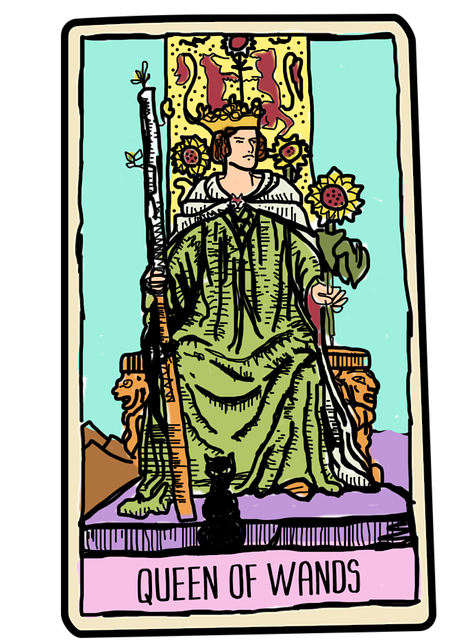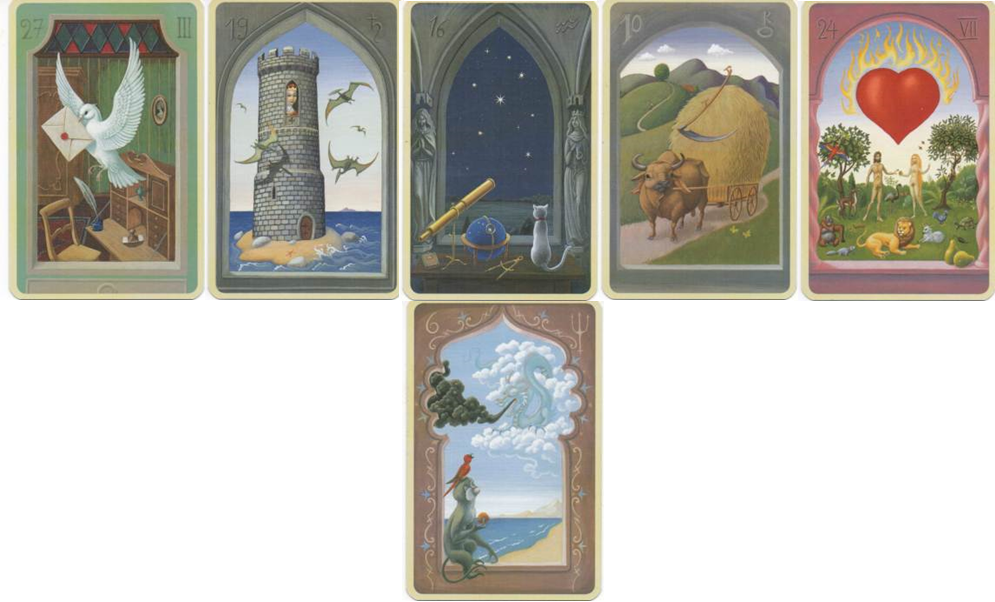
The roots of palm reading can be traced back to Greek history. It was not restricted to any particular culture or region. It was practiced in numerous schools of art all over the world. Practitioners are known as chirologists, hand readers, or palmists. Alexander the Great brought this art form to Greece.
Chiromancy
Chiromancy is a form of astrology that originated in the Near East during Hellenistic times. This ancient practice relies on intuition and is not connected to astrology. Its methodological foundations are unclear. In the sixteenth century, Christian chiromantics adduced a scriptural basis for chiromancy in Job 37:7, which may refer to God sealing up a hand before reading it. This text, however, is only partially understood as it is based on obscure symbolism.
Gypsy fortune-tellers were commonly depicted before the advent of modern practice as women who held male clients' hands. Gypsy chiromancy was becoming very popular in India by the 16thcentury, although it had already vanished from Egypt. Henry VIII, however, saw palmistry as a clever trick. Henry VIII failed to recognize that there had been a written chiromantic culture for over 200 years. As a result, British authorities began to rescue the practice from its gypsy veneer.
Palmistry
The practice of palm reading, also known as chiromancy, involves examining the lines in someone's hands and using them to make predictions about the future. Palmistry has been a tradition that has existed throughout history. It is also a practice that crosses cultures. It is performed only by those who are trained in the practice. These people are called chiromancy practitioners or chirologists.

You can read the four main lines of your palm by looking at them. Each line represents a different aspect of a person's personality. A curvature at the heart line, for example, will signify someone who is nurturing and emotionally. However, a straight line at the heart can indicate a person who is cautious and reserved.
Hand shape reading
You can use the following four lines to read your palms. These lines change throughout the day, and can provide a clue as to how someone feels. Many people find it helpful taking photos of their hands throughout each day to keep track of changes. An individual's flexibility may also be determined by how the line is shaped. A person with a curving heart line can be described as nurturing and emotionally open. A straight line is reserved and guarded.
The palm is useful for evaluating someone's personality. It can tell us a person's character traits, such as their sense of compassion. They might be compassionate and able to look at the other side. However, they might be stoic and inclined to make judgments. There are many ways to analyze palms, but one method that is timeless is to find similar palmists. This allows them to compare the results.
Life line
A person with a weak Life line has a Life line. A person who has a thin Life line will be very fragile and have difficulty coping with life's stresses. These people depend on their nervous energy and physical strength to survive. People with weak lines of life may not have a strong foundation and suffer from low motivation or health.
Many interpretations can be given to the life line. However, it generally represents an individual's overall physical disposition. While it may indicate the length of life a person can expect to live, some believe it is a measurement of how healthy they are. A person's health can be measured by the depth and thickness of their life lines.

Fish mark
The Fish mark on the palm is a symbol of happiness and good fortune that has its roots in ancient Greece. It is a symbol of happiness and unmeasurable good luck. Its color, a warm rose pink, is lucky and can bring you good fortune. It is a popular sight in Asia and is considered a good sign for palmistry. Learn more about how this palm sign is used in palmistry. The Fish mark is an important sign in palmistry.
Indian palmistry believes that the Fish sign is auspicious because it signifies a happy and loving partner. It can also be interpreted as good luck for the wife and long life for her husband. The Fish sign in Chinese palmistry looks like an open-ended triangle. Usually it appears at the end of the life line.
FAQ
What are your top hobbies?
Doing something you enjoy is the best hobby. If you enjoy what you do, it will be much easier to keep going. You'll also have an excuse when you're not feeling well or tired!
We all have hobbies that we love and know. These include painting, crafting, photography, cooking and sports.
Consider volunteering at your local animal shelter, charity shop, hospice, children's hospital or hospice, elderly care home, school center, church, or community center.
Let's say you are looking for something more exciting. Consider scuba diving and skydiving.
If you want to go further afield, there are plenty of unique ways to spend time in nature. These include caving, cliff diving, cave tubing, abseiling, sea kayaking, rafting, canoeing, climbing, trekking, bushwalking, mountaineering, backpacking, trail running, orienteering, off-road driving, quad biking, motorcycling, motorcycle riding, dirt bike riding, jet boating, hang gliding, hang gliding, parachuting, hang gliding, heli-skiing, ice skating, snowmobiling, snowshoeing, snowshoeing, cross country skiing, downhill skiing, telemark skiing, ski touring, sled dog racing, snowboarding, snowkiting, snowmobiling, spelunking, snowshoe hiking, snowshoeing and many more.
What is observation hobby?
Observation hobbies are activities where you observe people doing what they do. You might be interested in watching sports, reading, going on holidays, and so forth. It could also involve observing others.
Observation hobbies are great because they help you learn how to think creatively. You can use this knowledge later when you're working on projects for yourself or others.
You'll find that if you're interested in something, then you'll have an easier time learning about it.
For example, if you want to know more about football, you may watch a game or read a book about it. You could visit or take part in exhibitions if you are interested in learning more about photography.
If you like to play music, you can either learn the songs online or get a guitar.
You have the option to make your own meals or take out at a restaurant if you enjoy cooking.
If you like gardening, you could grow vegetables or flowers.
If you like dancing, you could join a dance class or go out with friends.
If you enjoy painting, you might paint pictures.
Write poetry and stories if that is what you love to do.
Drawing pictures is a great hobby.
You could work as a caretaker or keeper at a zoo if you are passionate about animals.
If you enjoy science, you might consider studying biology, chemistry and physics.
History lovers can watch films, read books or listen to podcasts.
If you enjoy travelling, you might consider exploring your local area or traveling abroad.
What's a hobby?
Hobby for children is anything they enjoy doing outside of work. You might find them interested in drawing, building things, painting, writing stories, playing with toys, listening to music, reading books, watching TV, and playing computer games. They may also like to play soccer, football, basketball, cricket, rugby, baseball, and hockey.
Many parents worry about their children getting into trouble if they have the freedom to do what they want. It is not true. Your child will not get into trouble if he or she is safe and doesn’t cause any harm to other people or themselves.
It is important that people remember that simply because they love doing something does not mean they will always do it. If they don't like writing but love drawing, they might choose to draw images instead.
There are many different hobbies, so it is up to you which one you love the most.
What are the most popular hobbies right now?
Popularity does not always mean that you are popular. It is often used as an excuse for mediocrity. The fact is that most people do not have time to pursue any hobby they want. They're too busy working to make ends met. You don't have the time to do all of these things. You could open a business.
But it's not an easy task. You will need to overcome many obstacles before your idea can become a reality.
A hobby is a great option if you're looking to do something different than run a business.
Hobbies aren't just limited to creative pursuits. There are many kinds of hobbies. These hobbies include:
-
Gardening
-
Cooking
-
Photography
-
Reading
Statistics
- This 100% accurate personality-analyzing hobby quiz discovers your passion based on your characteristics. (quizexpo.com)
- Much of this decline reflects the fact that teens are less likely to work today than in the past; among employed teens, the amount of time spent working is not much different now than it was around 2005. (pewresearch.org)
- The Role of the Mind in Sex, Dating, and Love: Men in the “humor” condition received phone numbers from 42.9% of the female participants and were refused 57.1% of the time. (time.com)
- The intensity of the dialogue partners' bond at the end of the forty-five-minute vulnerability interaction was rated as closer than the closest relationship in the lives of 30 percent of similar students. (time.com)
- Almost 80% of people claim to have no hobby. (hobbylark.com)
External Links
How To
How to learn how to play a musical instrument
There are many ways you can learn to play music. You could either go to a school, buy a book, take lessons from someone who plays an instrument, watch videos online, etc. However, if you decide to find your own way to learn, here are some tips and tricks that might help you out.
-
Find something that interests you. Try another instrument if you don't love any of the ones you see. It is difficult to enjoy an instrument if it is not something you are interested in.
-
Be patient. Learning something new takes time. Don't expect to master everything right away. Instead, keep practicing every day.
-
Keep practicing regularly. Even if you feel tired, keep practicing. This will ensure you don't forget what lessons you have just learned.
-
Make sure you choose a safe place to practice. The ideal place to practice is one that is quiet and won't be disturbed by anyone else. Make sure there aren't distractions. Also, don't let loud music play near your home.
-
Have fun. Music is meant to be enjoyed. So make sure that you always have fun while practicing. You'll be more motivated to practice if you enjoy yourself.
-
Set goals. Setting goals will help you to know exactly what your goal is. Therefore, you will have no excuse for failing.
-
Keep track of your progress. Keep track of all your successes and failures. You'll be able to learn and improve as you go.
-
Pause. Sometimes, all you need is to take a moment to think. Taking breaks will give you time to think about things.
-
Ask questions. Ask questions. They may be able to help you out.
-
Learn by listening. Many musicians listen to songs that they like and imitate them. This allows them to grasp the basic concepts of the song.
-
Read books. Reading books will teach you more than watching videos or taking classes. Books often contain information you can't find elsewhere.
-
Join a band. Playing with others will force you to practice more. Plus, you'll meet people with the same interests as you.
-
View tutorials. Tutorials are short videos that give detailed information on a topic. These tutorials usually concentrate on one particular aspect of an instrument. You can learn difficult parts of the instrument by watching tutorials.
-
Different methods are possible. Some prefer to learn by listening, while others prefer reading. You can experiment until you discover what works for you.
-
Practice makes perfect. The truth is that nobody becomes an expert overnight. Instead, it takes time and effort to become proficient enough for you to succeed.
-
Begin a group of musicians. Listening and learning from others can help you to learn faster.